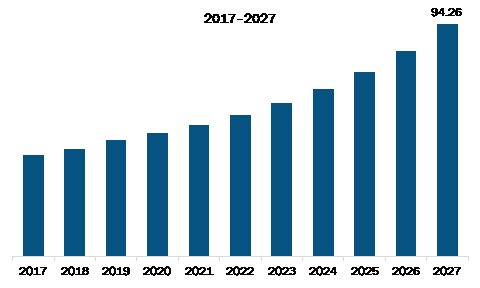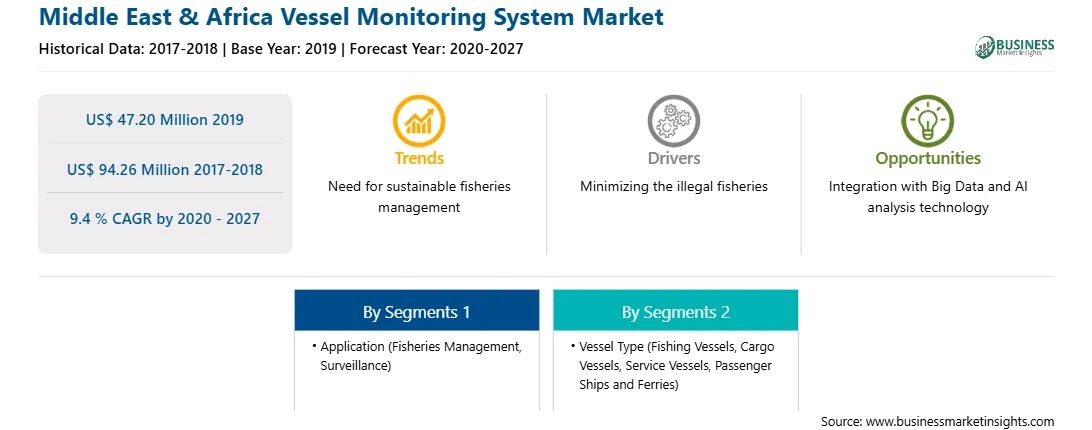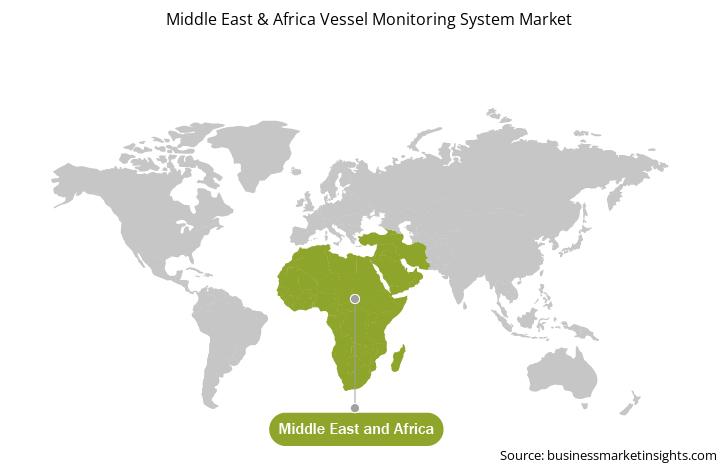The vessel monitoring system (VMS) is a satellite-based monitoring system providing data to end-user (operators of fishing vessels, cargo vessels) related to location, speed, and course of vessels. The VMS is heavily used for fisheries management. This system also finds its application in service vessels, passenger ships, and ferries. The fisheries managers have begun using VMS decades ago to track exact locations and monitor the fishing vessels' activity to strengthen the effectiveness of fisheries management measures. The VMS gathers vessel positions with help from satellite signals and transmits data to the communication server, which is further communicated to the land-based station/room. By using VMS, the task of tracking vessel becomes easy and fast, and assist in preventing wrongdoing activities at sea. Backed by government support, VMS is a standard system of fisheries monitoring and control across MEA. Increasing trade of goods other than fisheries at a large scale is projected to influence the demand for advanced tracking solutions such as VMS across MEA. Factors such as surge in need for monitoring due to illegal activities and escalation in fisheries applications are expected to create significant demand for VMS which will drive the MEA vessel monitoring system market.
Furthermore, in case of COVID-19, MEA is highly affected especially Saudi Arabia. Coronavirus outbreak has highly disrupted the supply and demand gap in the adoption of VMS (vessel monitoring system) in MEA countries. The population of MEA consumes higher volumes of seafood that is resulting into more trade in fisheries. However, due to disruptions in the supply chain of transporting fish and other seafood items caused by travel ban has affected the fisheries sector of the region massively. In addition, limited trade of other products, which are transported through cargo vessels, has also witnessed a downfall because of low demand from end users. Coronavirus had negatively affected the MEA vessel monitoring system market. The imposition of lockdown and movement of vehicles by government bodies to reduce curb the spread of the virus has negatively impacted the trade of products across MEA. Owing to the low business of trade, the number of cargo vessels, fisheries vessels has decreased drastically, which limited the use of VMS. Also, due to the temporary shutdown of manufacturing units, the procurement of new ships had negatively impacted, also affecting the vessel monitoring system market negatively.

Strategic insights for the Middle East & Africa Vessel Monitoring System provides data-driven analysis of the industry landscape, including current trends, key players, and regional nuances. These insights offer actionable recommendations, enabling readers to differentiate themselves from competitors by identifying untapped segments or developing unique value propositions. Leveraging data analytics, these insights help industry players anticipate the market shifts, whether investors, manufacturers, or other stakeholders. A future-oriented perspective is essential, helping stakeholders anticipate market shifts and position themselves for long-term success in this dynamic region. Ultimately, effective strategic insights empower readers to make informed decisions that drive profitability and achieve their business objectives within the market.

| Report Attribute | Details |
|---|---|
| Market size in 2019 | US$ 47.20 Million |
| Market Size by 2027 | US$ 94.26 Million |
| Global CAGR (2020 - 2027) | 9.4 % |
| Historical Data | 2017-2018 |
| Forecast period | 2020-2027 |
| Segments Covered |
By Application
|
| Regions and Countries Covered | Middle East and Africa
|
| Market leaders and key company profiles |
The geographic scope of the Middle East & Africa Vessel Monitoring System refers to the specific areas in which a business operates and competes. Understanding local distinctions, such as diverse consumer preferences (e.g., demand for specific plug types or battery backup durations), varying economic conditions, and regulatory environments, is crucial for tailoring strategies to specific markets. Businesses can expand their reach by identifying underserved areas or adapting their offerings to meet local demands. A clear market focus allows for more effective resource allocation, targeted marketing campaigns, and better positioning against local competitors, ultimately driving growth in those targeted areas.

The MEA vessel monitoring system market is expected to grow from US$ 47.20 million in 2019 to US$ 94.26 million by 2027; it is estimated to grow at a CAGR of 9.4 % from 2020 to 2027. Rising possibilities for cargo monitoring is expected to speed up the MEA vessel monitoring system market. An increasing seaborne trade across the MEA results in the rising investment in safety and security system which boosts the growth of the MEA vessel monitoring system market. Further, advancements in repair, restoration and upgrade of vessels is projected to fuel the growth for MEA vessel monitoring system market. Additionally, increase in trade activities backed retrofitting of old system with new advanced VMS to optimize and streamline the operations are among other factors forecasted to create growth opportunities for MEA vessel monitoring system market players. Advancements including near real-time tracking provides a brief analysis of the fleet, including risks, security threats, and various regulatory territories. So, factors like technological advancement, upgradations, safety and security, increase in trading, more efficiency, operations optimization etc. are expected to create more possibilities for cargo monitoring, which will ultimately drive the vessel monitoring system market in MEA.
In terms of application, the fisheries management segment accounted for the largest share of the MEA vessel monitoring system market in 2019. In terms of vessel type, the fishing vessels segment held a larger market share of MEA vessel monitoring system market in 2019.
A few major primary and secondary sources referred to for preparing this report on the MEA vessel monitoring system market are company websites, annual reports, financial reports, national government documents, and statistical database, among others. Major companies listed in the report are Applied Satellite Technology Ltd, BlueTraker, CLS Fisheries, ORBCOMM Inc., and Trackwell.
The Middle East & Africa Vessel Monitoring System Market is valued at US$ 47.20 Million in 2019, it is projected to reach US$ 94.26 Million by 2027.
As per our report Middle East & Africa Vessel Monitoring System Market, the market size is valued at US$ 47.20 Million in 2019, projecting it to reach US$ 94.26 Million by 2027. This translates to a CAGR of approximately 9.4 % during the forecast period.
The Middle East & Africa Vessel Monitoring System Market report typically cover these key segments-
The historic period, base year, and forecast period can vary slightly depending on the specific market research report. However, for the Middle East & Africa Vessel Monitoring System Market report:
The Middle East & Africa Vessel Monitoring System Market is populated by several key players, each contributing to its growth and innovation. Some of the major players include:
The Middle East & Africa Vessel Monitoring System Market report is valuable for diverse stakeholders, including:
Essentially, anyone involved in or considering involvement in the Middle East & Africa Vessel Monitoring System Market value chain can benefit from the information contained in a comprehensive market report.